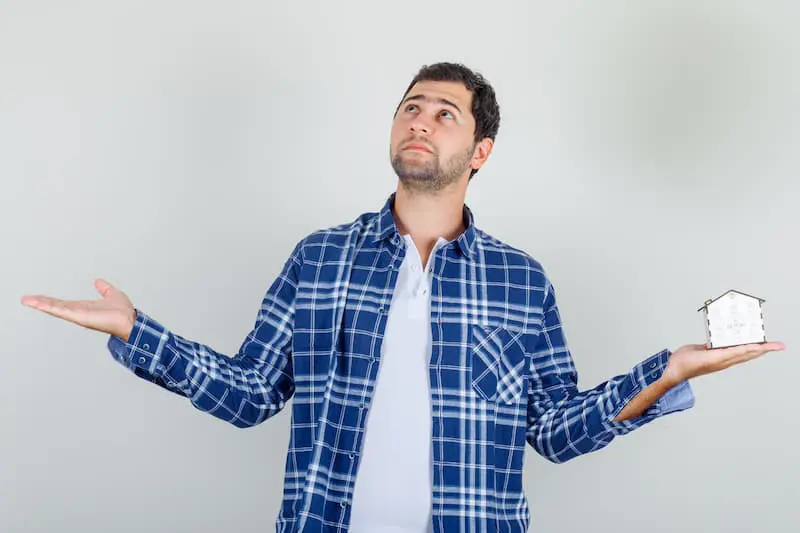If you’re considering selling your home, one of the biggest questions you might face is whether you need to invest in major repairs to attract buyers. One of the most expensive projects? Replacing your home’s siding.
While curb appeal matters, replacing siding is a huge investment that doesn’t always pay off in the long run. Before you spend thousands on renovations, let’s look at the cost of siding repairs, whether they’re worth it, and why selling to a cash buyer could save you time, money, and stress.
How Much Does New Siding Actually Cost?
Home siding isn’t just about looks—it protects your home from the elements, insulates against extreme temperatures, and prevents costly structural damage. But when it starts to crack, rot, or fade, replacing it can be a financial headache.
Here’s a breakdown of what you might pay for siding replacement based on material:
- Vinyl Siding: $6,750-$12,2501>
- Fiber Cement Siding (like Hardie Board): $5,000-$10,0001
- Wood Siding: $9,700-$18,0001
- Brick or Stone Veneer: $23,000-$89,000+1
- Stucco Siding: $10,000-$20,0001
Beyond the material, you must also consider labor costs, permits, and any necessary structural repairs hiding beneath the old siding. Even with budget-friendly options like vinyl, you could still be looking at a five-figure investment.
Will New Siding Increase Your Home’s Value?
While new siding can undoubtedly make your home look more appealing, it will not necessarily yield a full return on investment (ROI).
According to home improvement data, siding replacement typically recoups only 60-85%2 of its cost when you sell your home. If you spend $15,000 on new siding, you might only see $9,000–$12,000 back in your sale price.
The truth? Most buyers care more about the bones of the home than whether the siding is brand new. If they love the home’s layout, location, and overall structure, they may be willing to take on minor updates, especially in a competitive market.
The Hidden Costs of Siding Replacement
Beyond the price tag, replacing siding comes with other challenges that sellers often overlook:
Unexpected Repairs
Once contractors remove old siding, they often discover hidden issues like water damage, mold, or structural rot. These repairs aren’t optional—you must fix them before the new siding goes up, adding thousands to your project costs.
Lengthy Project Timelines
Depending on the material, weather conditions, and contractor availability, siding replacement can take several weeks or months. This delay can be frustrating if you’re hoping for a quick sale.
Disruptions to Your Daily Life
Siding installation is noisy and messy. You’ll deal with constant construction, dust, and limited access to parts of your home. If you’re already in the middle of planning a move, this extra hassle can be overwhelming.
Why Selling to a Cash Buyer Is the Smarter Choice
If your home’s siding is in rough shape but you don’t want to sink thousands into repairs, selling to a cash buyer could be the perfect solution. Here are four reasons why:
1. Sell As-Is—No Expensive Repairs Needed
Cash buyers purchase homes in any condition, so fixing or replacing your siding is unnecessary. They see beyond cosmetic issues and evaluate a home’s true potential, meaning you won’t have to worry about spending money on upgrades just to attract offers.
2. Skip the Stress of Inspections
When you list your home traditionally, buyers often request inspections, which can lead to repair negotiations or price reductions if they’re unhappy with the siding condition. Cash buyers skip inspections altogether, making the process smooth and hassle-free.
3. Close Quickly—On Your Timeline
Unlike traditional sales, which can take months, cash buyers can close in as little as a few days to a couple of weeks. That means no waiting for mortgage approvals, no lengthy negotiations, and no unexpected delays.
4. Avoid Realtor Fees and Closing Costs
Selling your home through a real estate agent typically means paying 5-6% in commissions plus additional closing costs. When you sell to a cash buyer, these expenses are often covered, leaving you with more money in your pocket.
Who Benefits Most from Selling As-Is?
While selling a home as-is isn’t for everyone, it’s an ideal option for homeowners in these situations:
- You must sell quickly due to life changes (relocation, job loss, divorce, etc.).
- You don’t have the budget for costly repairs.
- Your home has significant wear and tear, making selling on the open market challenging.
- You inherited a property that needs updates but don’t want the hassle of fixing it up.
- You’re an investor looking for a fast, no-hassle sale.
If any of these scenarios sound like yours, a cash buyer can help you move forward without the financial burden of home repairs.
Don’t Let Siding Costs Stand in Your Way
Replacing siding before selling your home isn’t always the best investment—especially when you have other options. Instead of pouring thousands into repairs, consider selling your house as-is to a cash buyer.
Not only will you save time and money, but you’ll also avoid the stress of home improvement projects and uncertain market conditions. If you’re ready for a simple, hassle-free sale, selling to a cash buyer might be the solution you’ve been looking for. Reach out to cash home buyers near you today to learn how a cash sale could work for you.
1https://www.fixr.com/articles/house-siding-cost
2https://www.nar.realtor/research-and-statistics/research-reports/remodeling-impact


